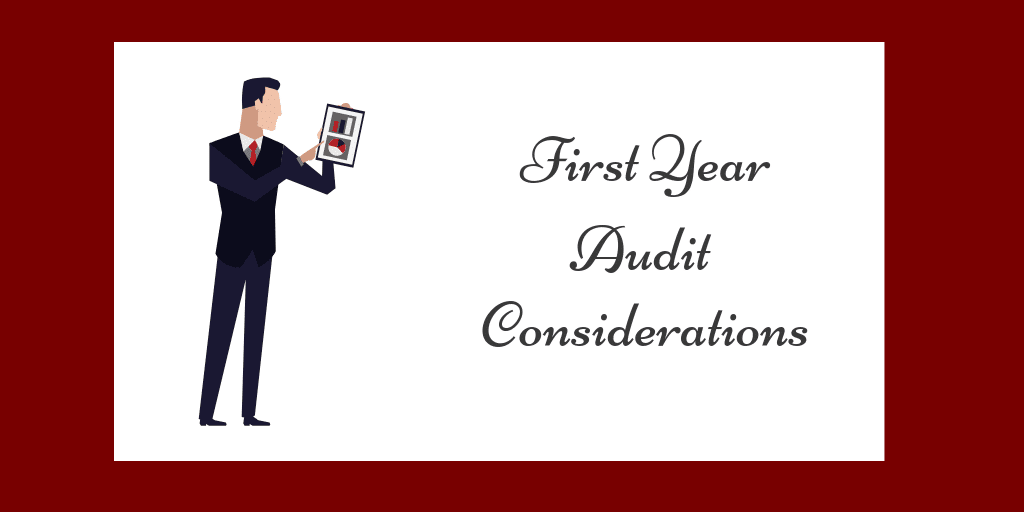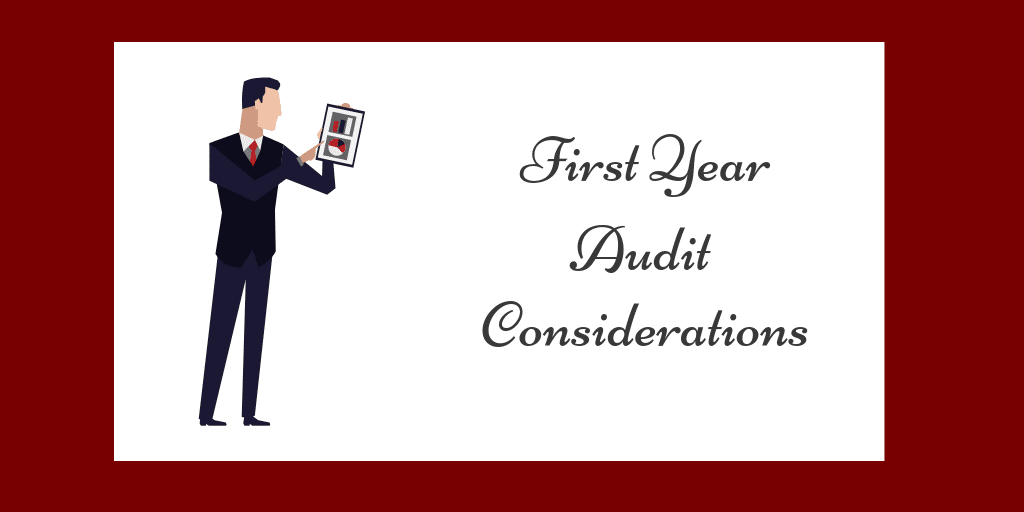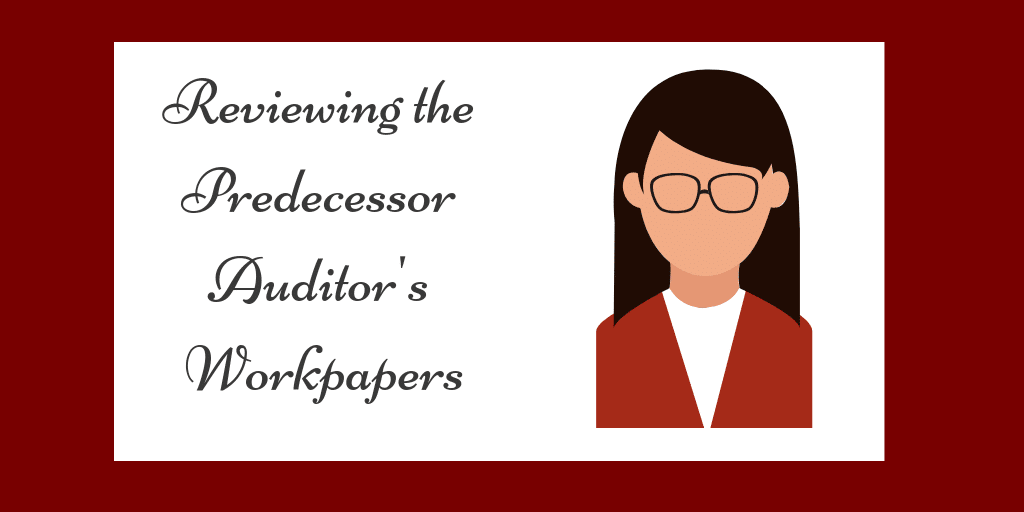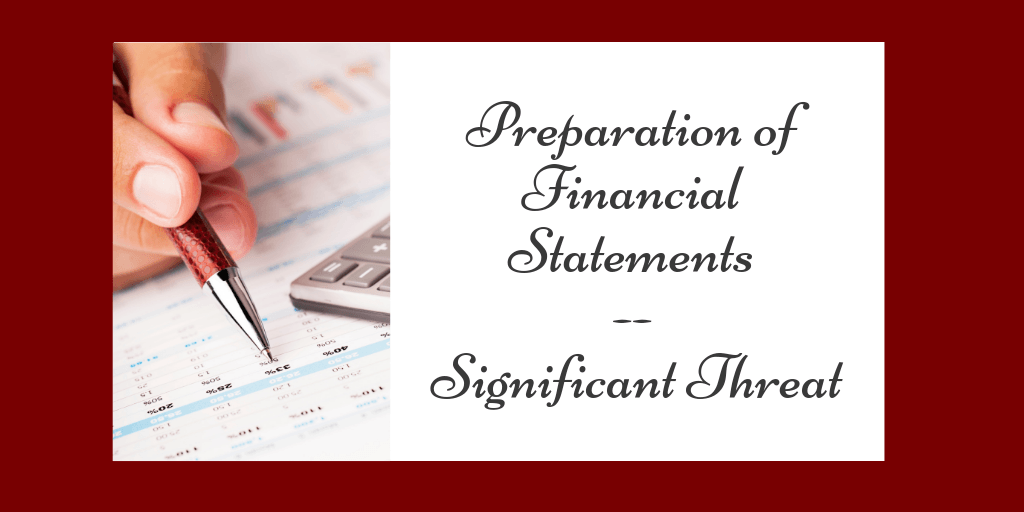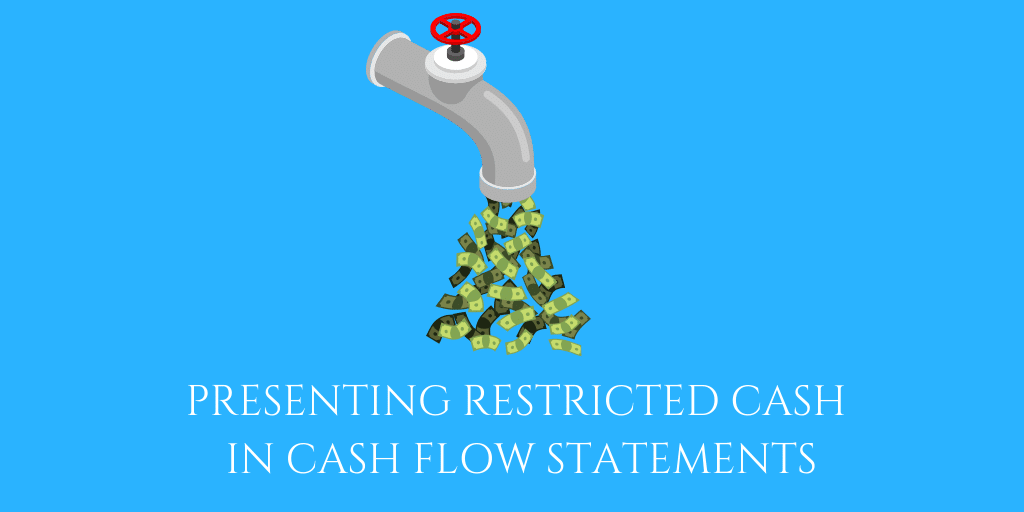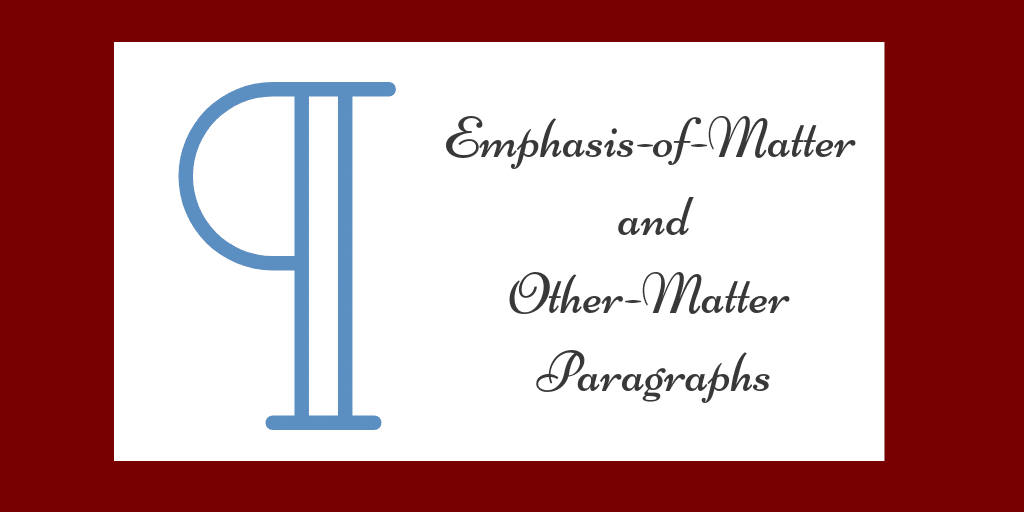
Emphasis of Matter and Other Matter Paragraphs
By Charles Hall | Auditing
Do you know what you need to know about emphasis of matter and other matter paragraphs? Sometimes auditors elect to or are required to add an extra paragraph after the opinion paragraph. You need to know why and when. (This article was written prior to the amendments made by SAS numbers 134, 137, 140, and 141. Those amendments are effective for periods ending on or after December 15, 2021. See my new article regarding the amended guidance for emphasis of matter and other matter paragraphs.)
This post gives you the leg up on emphasis of matter (EOM) paragraphs and other matter (OM) paragraphs.
Definitions
First, let’s first define the two terms.
AU-C 706.05 provides the following definitions:
Emphasis-of-matter paragraph. A paragraph included in the auditor's report that is required by GAAS, or is included at the auditor's discretion, and that refers to a matter appropriately presented or disclosed in the financial statements that, in the auditor's professional judgment, is of such importance that it is fundamental to users' understanding of the financial statements.
Other-matter paragraph. A paragraph included in the auditor's report that is required by GAAS, or is included at the auditor's discretion, and that refers to a matter other than those presented or disclosed in the financial statements that, in the auditor's professional judgment, is relevant to users' understanding of the audit, the auditor's responsibilities, or the auditor's report.
Notice that an EOM refers to “a matter appropriately presented or disclosed in the financial statements,” while an OM refers to “a matter other than those presented or disclosed in the financial statements.”
Now, let's take a look at sample EOM and OM paragraphs.
Sample Emphasis of Matter Paragraph
Here’s a sample EOM paragraph:
Emphasis of Matter
As discussed in Note X to the financial statements, the Company has elected to change its policy for determining cash equivalents in 20X 7. Our opinion is not modified with respect to that matter.
Sample Other Matter Paragraph
Here is a sample OM paragraph:
Other Matter
In our report dated April 18, 20X5, we expressed a qualified opinion since the Company’s main office had a material unrecognized impairment loss. As noted in Note 12, the Company has now recognized the impairment in conformity with accounting principles generally accepted in the United States of America. Accordingly, our present opinion on the restated 20X4 financial statements, as presented herein, is different from that expressed in our previous report.
You also need to know the presentation requirements for EOM and OM paragraphs.
Presentation Requirements for an EOM
AU-C 706.06 and 706.07 provides guidance in reference to EOMs. The auditor should:
- Refer only to information presented or disclosed in the financial statements
- Include the EOM immediately after the opinion paragraph in the auditor’s report
- Use the heading “Emphasis of Matter” or other appropriate heading
- Include a clear reference to the matter being emphasized and to where relevant disclosures that describe the matter can be found
- Indicate that the auditor’s opinion is not modified with respect to the matter emphasized
Presentation Requirements for an OM
AU-C 706.08 provides guidance in reference to OMs. The auditor should:
- Include the OM immediately after the opinion paragraph and any EOM paragraph (or elsewhere in the auditor’s report if the content of the OM paragraph is relevant to the “Other Reporting Responsibilities” section – see AU-C 706.A6--.A11)
- Use the heading “Other Matter” or other appropriate heading
AU-C Sections Requiring EOMs
Sometimes EOMs are required; here are examples:
- AU-C 570.15-.16 The Auditor’s Consideration of an Entity’s Ability to Continue as a Going Concern
- AU-C 560-.16c Subsequent Events and Subsequently Discovered Facts
- AU-C 708.08-.09 and .11-.13 Consistency of Financial Statements
See exhibit B of AU-C 706 for a complete listing of AU-C sections requiring EOM paragraphs.
An EOM is commonly required when a company has a change in an accounting principle (that has a material impact). AU-C 708 Consistency of Financial Statements paragraphs .07-.08 provides guidance on when the EOM is required.
The auditor also has an option to use an EOM to emphasize matters that are not required by audit standards. So, sometimes EOMs are included because they are required (e.g., going concern) and, other times, they are optional (e.g., to highlight a related party transaction).
AU-C Sections Requiring OMs
Sometimes OMs are required; here are examples:
- AU-C 725.09 Supplementary Information in Relation to the Financial Statements
- AU-C 800.20 Special Considerations—Audits of Financial Statements Prepared in Accordance With Special Purpose Frameworks
See exhibit C of AU-C 706 for a complete listing of AU-C sections requiring OM paragraphs.
Simple Summary
- Use EOMs to OMs to highlight important matters
- EOMs refer to matters presented or disclosed in the financial statements
- OMs refer to a matter other than those presented or disclosed in the financial statements
- EOMs and OMs are—in certain situations—required by audit standards
- An EOM should immediately follow the opinion paragraph and should refer to the note that describes the issue; include the heading “Emphasis of a Matter” or other appropriate heading
- An OM should immediately follow the opinion paragraph and any EOM (if one is included); include the heading “Other Matter” or other appropriate heading
Of course, creating your opinion is just a part of wrapping up your audits.

